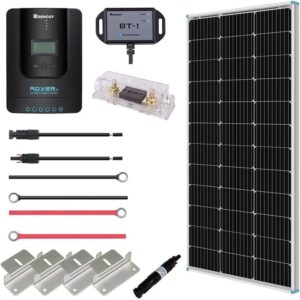Imagine savoring the rich aroma of smoked meats wafting through your backyard, a scene that evokes old traditions and cozy gatherings.
Building your own smokehouse can be a rewarding project that transforms your outdoor space into a culinary paradise. With the convenience of pre-made kits, you can embark on this DIY adventure even if you aren’t a master craftsman.
This article will guide you, step-by-step, on how to build a smokehouse using pre-made kits. You’ll be amazed at how accessible and satisfying this project can be.
Why Build a Smokehouse?
If you love the distinctive flavor of smoked meats, cheeses, or even vegetables, a smokehouse is a worthy investment for your home. Unlike smaller smokers or electric versions, a smokehouse gives you the flexibility to smoke larger quantities of food at once, ideal for family events or preserving a batch of your favorite smoked salmon.
Pre-made kits make the building process much easier, saving you the hassle of sourcing materials and navigating complex construction plans.
Choosing Your Smokehouse Kit
The first thing you’ll need is the right smokehouse kit. There are several options available, depending on your budget, available space, and how involved you want the process to be.
Here are a few great pre-made smokehouse kits that you can consider, all of which are highly rated and available on Amazon:
- Bradley Smoker BTDS76P Electric Smoker: While technically more of a smoker than a traditional smokehouse, this model is great for beginners. It’s easy to use, reliable, and allows you to experiment without diving into a full-scale construction project.
- Smokehouse Products Big Chief Front Load Smoker: If you’re looking for something straightforward that doesn’t require extensive setup, the Big Chief Smoker might be what you need. It has a simple assembly and is perfect for smoking fish, meats, and even nuts.
- DIY Cedar Smokehouse Kit: This is for the enthusiast who wants to put in a little work. A cedar smokehouse kit provides the classic charm of an outdoor wooden smokehouse. The kit comes with pre-cut cedar panels and all the hardware you’ll need, making the construction both manageable and rewarding.
Preparing Your Space
Before starting the construction, you’ll want to choose the right spot for your smokehouse.
Ideally, you’ll need an area in your backyard that is level, has good ventilation, and is away from flammable materials. Smokehouses, even those built from kits, require space, so ensure you have enough room to safely work and operate your new setup.
Consider access to power. If you decide to get a smoker kit that requires electricity, make sure you have an outlet nearby or a weather-safe extension cord.
Building Your Smokehouse
Once you’ve picked out your smokehouse kit and identified your workspace, it’s time to start building.
Most pre-made kits come with detailed instructions, but here’s a general overview of what the building process might look like:
Step 1: Lay the Foundation
Depending on the kit you’ve selected, your smokehouse might need a solid foundation. Use patio stones or concrete blocks to create a level base. This ensures your smokehouse remains stable and makes it easier to control temperature during smoking.
Step 2: Assemble the Walls and Roof
The next step involves assembling the walls and roof of the smokehouse. Pre-made kits often come with pre-drilled panels, making the process straightforward. Start by attaching the base panels to the foundation and work your way upwards.
A kit like the DIY Cedar Smokehouse Kit will come with cedar panels that are already cut to size. You’ll typically use screws or nails to put everything together.
Make sure you follow the instructions closely, as the roof structure is essential for proper smoke flow.
Step 3: Install Shelving and Hooks
Once the walls are up, it’s time to add the shelves and hooks.
This is where your meat, fish, or other items will hang while smoking. Many kits will come with adjustable shelves, giving you the flexibility to smoke a variety of foods. Ensure that the racks are well-secured, as the weight of meat can add up quickly.
- Pro Tip: Stainless steel hooks are ideal for hanging large cuts of meat or sausages. They’re easy to clean and rust-resistant, which is important for food safety.
Step 4: Ventilation and Chimney
Proper ventilation is crucial in a smokehouse. If your kit comes with a chimney or vent, make sure it is correctly installed.
The chimney will help regulate the airflow, allowing smoke to circulate properly for even smoking. Some kits, like the Cedar Smokehouse, come with an adjustable damper to control smoke flow more precisely.
Choosing the Right Wood Chips
The flavor of your smoked food depends significantly on the type of wood chips you use. Here are some popular wood chip options and what foods they pair well with:
- Hickory: Great for pork and ribs. Hickory provides a strong, hearty flavor that works well with tougher cuts of meat.
- Applewood: A milder, fruity smoke that’s perfect for poultry and pork.
- Cherry: Adds a slightly sweet, rich flavor that works well with beef and fish.
- Mesquite: Strong and earthy, mesquite is ideal for red meats.
You can find highly-rated wood chips on Amazon, such as Western Premium BBQ Products Post Oak Smoking Chips or Weber Wood Cubic Meter Apple Wood Chips. Both of these products are frequently used by smokehouse enthusiasts and have received excellent reviews.
Curing and Seasoning Your Smokehouse
Before you start smoking your first batch of meat, it’s important to cure and season your smokehouse. This process helps to get rid of any residual chemicals or unwanted smells from the building materials.
To do this, you’ll need to build a small fire inside the smokehouse using hardwood. Allow the smoke to fill the smokehouse for several hours. You can repeat this process a few times until the interior of the smokehouse develops a slightly darkened, seasoned appearance.
Smoking Your First Batch
Now that your smokehouse is built and seasoned, it’s time for the exciting part: smoking your first batch of food.
Here are a few tips to help you get started:
- Prepare Your Meat: Whether it’s fish, ribs, or sausages, make sure to brine or marinate your meat in advance. Brining adds flavor and helps preserve the meat.
- Temperature Control: The ideal smoking temperature depends on the type of food you’re smoking. For most meats, you’ll want to maintain a temperature between 160°F and 200°F. A ThermoPro TP20 Wireless Remote Digital Thermometer (available on Amazon) is a fantastic tool to help you monitor the temperature without constantly opening the door.
- Patience is Key: Smoking is a slow process. Depending on the type of meat, it could take anywhere from 4 hours to 12 hours or more. Resist the temptation to open the door frequently, as this lets the smoke escape and affects the overall cooking temperature.
Maintaining Your Smokehouse
To keep your smokehouse in top condition, regular maintenance is essential. Clean the racks and hooks thoroughly after each use, and periodically inspect the interior for any signs of wear or damage. The buildup of creosote (a black, tar-like substance) can occur over time, so make sure to scrape this away to keep the smokehouse operating safely.
Experimenting with Smoking Recipes
Once you get comfortable with smoking, you can start experimenting with different recipes. Try smoking a whole turkey for Thanksgiving, or make your own smoked sausages for a backyard barbecue.
The beauty of having your own smokehouse is the ability to customize flavors to your taste.
Some popular items to try smoking include:
- Beef Brisket: Season with a dry rub of black pepper, salt, paprika, and garlic powder. Smoke over hickory wood for 10-12 hours for tender, flavorful brisket.
- Smoked Salmon: Brine the salmon fillets overnight in a mixture of brown sugar, salt, and water. Smoke with applewood chips until the salmon is flaky and tender.
- Smoked Cheese: Using a cold smoking technique, you can add a unique flavor to cheddar, gouda, or mozzarella.
Troubleshooting Common Issues
- Too Much Smoke: If your food has a bitter taste, you may be using too much wood or your smokehouse is not ventilated properly. Adjust the chimney or vent to allow more airflow.
- Uneven Cooking: Make sure to rotate your racks or reposition your meat halfway through the smoking process. This helps ensure even exposure to smoke and heat.
- Difficulty Maintaining Temperature: External factors like wind or cold weather can make it challenging to maintain a consistent temperature. Try using a windbreak or insulating the outside of your smokehouse.
The Satisfaction of DIY Smoking
Building your own smokehouse is more than just constructing a tool—it’s about embracing a timeless culinary tradition.
As you master the craft of smoking, you’ll not only enjoy the rich, smoky flavors of your favorite foods but also the pride that comes from creating something with your own hands.
A pre-made kit makes this journey approachable, even if you’re new to DIY projects. By starting with a reliable, highly-rated kit, you’ll avoid many of the pitfalls of building from scratch and can focus on what truly matters: crafting delicious, smoked meals for your family and friends.
With patience, the right tools, and a bit of creativity, your backyard smokehouse will become a centerpiece for gatherings and a source of memorable meals for years to come.

